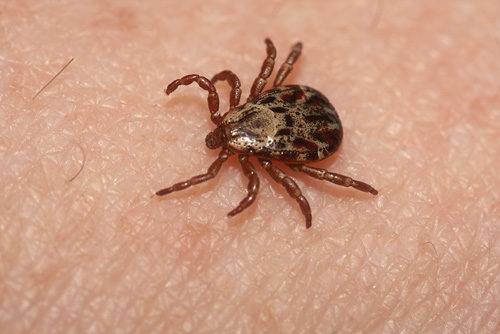Watch out for ticks when working outdoors

Outdoor workers face a variety of hazards on the job. Beyond the usual suspects – severe weather, extreme temperatures, and traffic – an additional concern may be present: ticks. Ticks may be infected with bacteria, parasites and viruses, and can pass certain pathogens to humans, according to NIOSH. Common tick-borne illnesses include Lyme disease, babesiosis, ehrlichiosis and Rocky Mountain spotted fever.
Where and when
Outdoor workers are at risk of exposure to ticks they are in a wooded or bushy area, or an area with high grass or leaf litter. (Visit www.cdc.gov/niosh/topics/tick-borne for a chart describing where ticks can be found in the United States.)
Outdoor workers in most areas of the Unites States should be mindful about protecting themselves from ticks in the spring, summer and fall, when ticks are most active. However, be aware that ticks may be active throughout the year in some warmer-weather regions, NIOSH cautions.
Protection
NIOSH recommends workers follow a number of tips to help prevent tick bites. Among them:
- Wear light-colored clothing, including a hat, long-sleeved pants tucked into boots and a long-sleeved shirt.
- Apply insect repellent that contains 20 percent to 30 percent DEET on any exposed skin, and reapply as often as necessary.
- Consider using Permethrin – a repellent that kills ticks on contact – on work clothes. However, be aware that Permethrin can be used only on clothing, not on skin.
- Thoroughly check clothing and skin every day for ticks.
- Wash and dry work clothes, which will kill any ticks present.
If you find a tick on your body, grasp it firmly and as close to your body as possible with a fine-tipped tweezer. Pull the tick away in a steady motion, and clean the area with soap and water. “Removing infected ticks within 24 hours reduces your risk of being infected with the Lyme disease bacterium,” NIOSH states.
Post a comment to this article
Safety+Health welcomes comments that promote respectful dialogue. Please stay on topic. Comments that contain personal attacks, profanity or abusive language – or those aggressively promoting products or services – will be removed. We reserve the right to determine which comments violate our comment policy. (Anonymous comments are welcome; merely skip the “name” field in the comment box. An email address is required but will not be included with your comment.)

